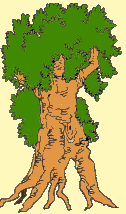Khaya senegalensis
Khaya sénégalensis.
Khaya sénégalensis (Caïlcédrat)
Common name: Caïlcedrat
African names - Wolof: kail Bambara: dala or diala.
- Peuhl: kail --Goun and Fon: Agao goto or zouza goto.
Description
It is a large tree that can reach 30 to 35m in height. The crown is particularly robust and ovoid. The leaves are alternate, compound, paripinnate, and clustered at the ends of the twigs. The fruit is a globular capsule that bursts into 4 valves each containing flat seeds.
use
The bark of the cailcedrat is widely used in West Africa and it is rare to find a cailcedrat with its bark intact. The bark is tonic, febrifuge, astringent, and anti-inflammatory. The most used part in powder and decoction is the bark. The herbal tea is bitter and very effective against malaria, diabetes, stomach aches, and painful periods. This is the African cinchona. The bark is widely used in BENIN and is used in almost all herbal teas.
Direction of use
--Fever and malaria Drink a decoction of the bark. - Bark powder is used against diabetes, obesity, heavy periods, and painful periods. 1 teaspoon per day in the middle of a meal.
Note: The bark of the caïlcedrat is effective but bitter and is used alone (in powder and in decoction) or in association with other plants. Even on its own, it remains effective internally and externally as an astringent, febrifuge, and anti-inflammatory. The powder of caïlcedrat must appear in your pharmacy box.
Add a comment























